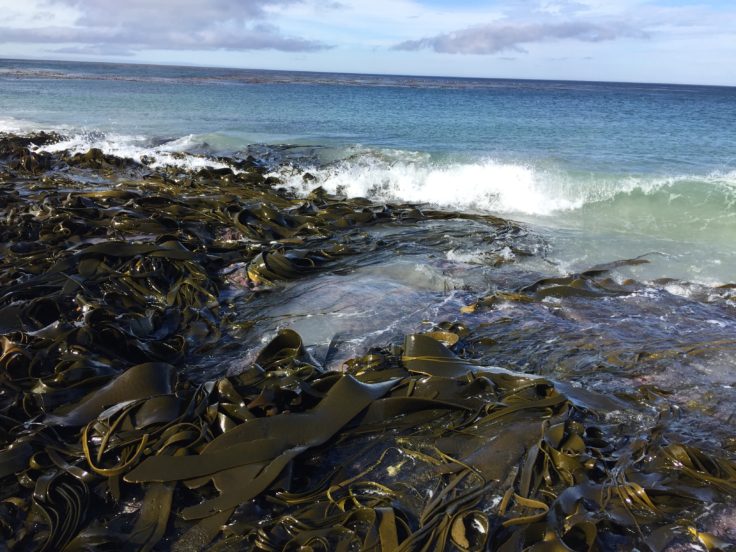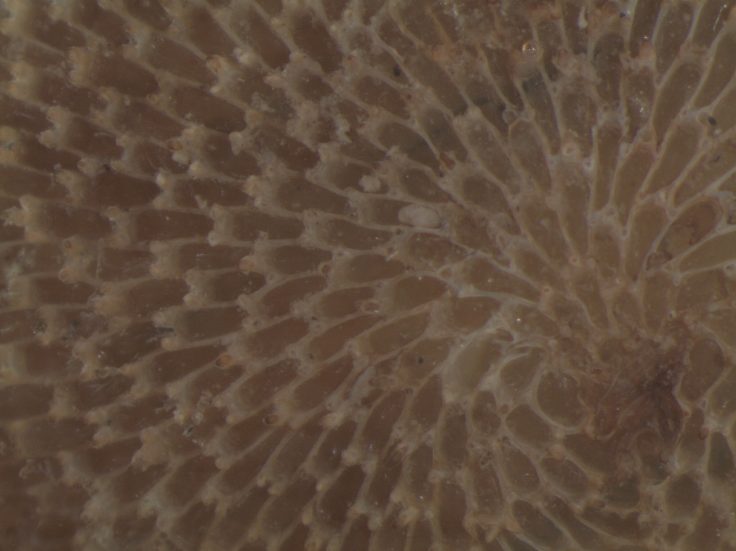Large brown seaweed can bring invasive species to Antarctica, according to research published today (31 January 2020) in the journal Scientific Reports. The new study describes the first scientific evidence of a potentially invasive and colonial species -the marine bryozoan Membranipora membranacea – which reached the sub-Antarctic Deception Island in kelp drifting in the ocean currents.

A team of researchers from the Biodiversity Research Institite (IRBio) at University of Barcelona, Institute of Marine Sciences, University of Hull and British Antarctic Survey describes how, for the first time, they discovered the arrival of organisms in Antarctic latitudes, which had hitched a ride on kelp from distant ecosystems in the northeast Pacific Ocean some x kms away.
"Although this way of natural expansion was known in other natural ecosystems on the planet, this phenomenon has taken a special scientific relevance as a potential mechanism to introduce new species in Antarctic ecosystems", notes the lecturer Conxita Àvila, from the Department of Evolutionary Biology, Ecology and Environmental Sciences and IRBio.
Bryozoans, molluscs, annelids, arthropods, echinoderms, cnidarians and sponges are some of the unexpected passengers – although not invasive – that travelled thousands of kilometres on top of macroalgae that were driven by the wind and marine currents to the Antarctic and Subantarctic islands. With large dimensions, these kelps -the species Macrocystis pyrifera and Durvillaea antarctica- build submarine forests and their ecological role is crucial in the marine ecosystems as a natural refuge for a wide range of organisms (algae, fish, molluscs, etc.).
According to researcher Blanca Figuerola (ICM-CSIC):
"This species has never been previously reported from south of the Polar Front. Thus, it could have a big ecological impact on the biodiversity in Antarctica in the future. This species has a fast growth rate and could easily colonize a notable surface of kelp rafts, creating thick layers and making them more fragile. The colonies of M. membranacea limit the ability of kelpe to reproduce and grow and make them prone to break during storms, and this further facilitates the spread of the bryozoan".

"Moreover -continues Figuerola- the encrusting colonies can settle on other surfaces (plastics, boats, etc.), and plankton larvae can be transported by ballast water and survive during months. All these factors would affect the environmental balance should the species settle in Antarctica".
The risk of invasion by non-native species is high in volcanic areas -such as Deception Island- since its environmental conditions are more favorable. However, any coastal area without ice could be a potential area for algae to arrive and distribute these organisms.
Co-author Dr Huw Griffiths, a biogeographer at British Antarctic Survey, says:
"We know that Antarctic is warming, which presents new opportunities, both caused by humans and natural, for animals and plants to enter the region, changing the existing unique local communities forever. Our findings highlight that it's easier than we previously thought for animals that have caused environmental damage elsewhere to reach the most extreme and remote continent on Earth. They are also a reminder that the ongoing work of scientists, in studying the biodiversity and ecology of the region, is vital in detecting these changes before these new species become established".
Invasive marine species discovered on non-native kelp rafts in the warmest Antarctic island by Conxita Avila , Carlos Angulo-Preckler , Rafael P. Martín-Martín, Blanca Figuerola, Huw James Griffiths & Catherine Louise Waller is published in the journal Scientific Reports.






